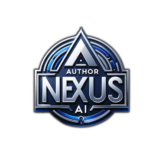Exploring the world of abstract art can open up a realm of possibilities for transforming your book cover design into a visual masterpiece. By stepping away from literal representations and embracing the emotive power of shapes, colors, and textures, you can create a cover that not only captures attention but also evokes the themes and emotions of your story. Whether you seek to intrigue potential readers with a burst of vibrant hues or convey depth and mystery through subtle, intricate patterns, abstract art offers a versatile and impactful way to express the essence of your book on its very first page.
Have you ever wondered how abstract art could transform your book cover design into a visual masterpiece? If you are an author or designer looking to craft a compelling cover, you’ve likely explored various artistic styles. Among these, abstract art stands out for its versatility and unique ability to evoke emotions, set the mood, and capture the essence of your story. But how exactly can abstract art make a significant impact on your book cover design? Let’s delve deep into this fascinating subject.
Understanding Abstract Art
What is Abstract Art?
Abstract art is a form of art that does not attempt to represent an accurate depiction of visual reality. Instead, it uses shapes, colors, forms, and gestural marks to achieve its effect. Abstract art frees itself from the constraints of traditional representation, offering endless creative possibilities.
History of Abstract Art
The roots of abstract art can be traced back to the late 19th and early 20th centuries, with artists like Wassily Kandinsky, Piet Mondrian, and Kazimir Malevich pushing the boundaries of conventional art. Their pioneering work laid the foundation for various abstract art movements that continue to inspire artists today.
Why Abstract Art?
Abstract art resonates deeply because it transcends the literal and tells a story through visual elements. It allows the viewer to engage with the artwork on a personal level, interpreting it through their own experiences and emotions. This characteristic makes abstract art particularly effective for book cover design, where you need to create an immediate, emotional connection with potential readers.
The Impact of Abstract Art on Book Cover Design
Visual Appeal
One of the most significant advantages of using abstract art in book cover design is its immediate visual appeal. Abstract art is eye-catching and can stand out on crowded bookshelves or in online marketplaces.
Emotional Resonance
Abstract art has the unique ability to evoke emotion without the necessity for representational imagery. By using colors, textures, and patterns, abstract art can set the emotional tone for your book right from the cover.
Versatility
Whether your book is a mystery, romance, science fiction, or a self-help guide, abstract art can be tailored to fit any genre. Its versatility allows it to capture the essence of your story in a non-literal way that still speaks volumes.
Key Elements of Abstract Art in Book Cover Design
Color
Color plays a crucial role in setting the mood and tone of your book. Warm colors might evoke feelings of passion and energy, while cool colors can create a sense of calm or mystery. An abstract design can use colors strategically to elicit the desired emotional response from potential readers.
| Color | Emotion / Mood |
|---|---|
| Red | Passion, Energy, Danger |
| Blue | Calm, Stability, Trust |
| Green | Growth, Harmony, Freshness |
| Yellow | Happiness, Positivity, Warmth |
| Black | Elegance, Mystery, Power |
Form and Shape
Shapes and forms used in abstract art can add layers of meaning to your cover. Curves might represent fluidity and flexibility, while geometric shapes could imply structure and precision.
Texture
Texture adds depth to your book cover, making it more engaging. Whether you use digital textures or physical elements like embossing, the tactile feel can significantly enhance the reader’s experience.
Composition
How the elements are arranged on your cover is crucial. A well-balanced abstract design can guide the viewer’s eye and create an aesthetically pleasing cover that captures attention.
Practical Steps to Incorporate Abstract Art into Your Book Cover Design
Identifying Your Book’s Core Theme
Before diving into design, identify the core theme or message of your book. What do you want potential readers to feel when they see the cover? Understanding this will help you make design choices that align with your book’s essence.
Selecting the Right Color Palette
Based on the theme of your book, choose a color palette that reinforces the desired emotions. Tools like Adobe Color can help you create harmonious color schemes that work well together.
Experimenting with Shapes and Forms
Play around with different shapes and forms to see what best represents the essence of your book. Don’t be afraid to experiment; abstract art is all about breaking the rules.
Adding Texture
Consider how texture can add another layer of interest to your design. Digital textures can create a sense of depth, while physical textures in printed books can enhance the tactile experience.
Balancing the Composition
Ensure that the design elements are well-balanced. Your goal is to create a cover that is cohesive and aesthetically pleasing while effectively conveying the mood and theme of your book.
Tips for Collaborating with an Abstract Artist
If you’re not an artist yourself, collaborating with a professional can bring your vision to life. Here are some tips to ensure a successful partnership:
Communicate Your Vision
Clearly communicate your vision and the essence of your book to the artist. Provide them with key themes, emotions, and any specific ideas you have in mind.
Be Open to Interpretation
Give the artist creative freedom to interpret your vision. Abstract art is highly subjective, and their expertise can offer new and exciting perspectives.
Review and Revise
Collaborate closely throughout the design process. Review drafts and provide constructive feedback, but also be open to the artist’s suggestions and insights.
Case Studies: Successful Book Covers Using Abstract Art
Case Study 1: “The Alchemist” by Paulo Coelho
The cover of “The Alchemist” utilizes abstract elements to evoke a sense of wonder and mysticism. The use of warm, golden hues aligns with the book’s themes of exploration and inner journey.
Case Study 2: “1Q84” by Haruki Murakami
The abstract cover of “1Q84” employs geometric shapes and a minimalistic color palette to create a sense of surrealism and intrigue, reflecting the book’s complex narrative.
Case Study 3: “The Bell Jar” by Sylvia Plath
A more subdued, abstract design featuring fluid shapes and muted colors sets a melancholic tone for “The Bell Jar,” capturing the essence of this poignant novel.
Tools and Resources for Designing Your Book Cover
Design Software
- Adobe Illustrator: Ideal for creating vector-based designs.
- Adobe Photoshop: Useful for adding texture and detailed editing.
- Canva: A user-friendly alternative for those new to design.
Stock Art Websites
- Shutterstock: Offers a wide range of abstract art images.
- Getty Images: High-quality, professional stock art.
- Unsplash: Free, high-resolution art images suitable for various projects.
Inspiration Platforms
- Pinterest: Great for finding and curating design inspiration.
- Behance: Showcases professional portfolios from designers worldwide.
- Dribbble: A community of designers showcasing creative work, including book cover designs.
Final Thoughts
Abstract art offers a powerful and versatile tool for book cover design. By focusing on color, shape, texture, and composition, you can create a cover that not only stands out but also captures the essence of your book. Whether you are a seasoned designer or a first-time author, incorporating abstract art can transform your book cover into a visual masterpiece that resonates emotionally with your audience.
So, as you embark on your next book cover design project, consider the boundless possibilities abstract art has to offer. By embracing this creative approach, you’ll be well on your way to crafting a cover that speaks to the soul of your story and captivates potential readers.
Happy designing!



